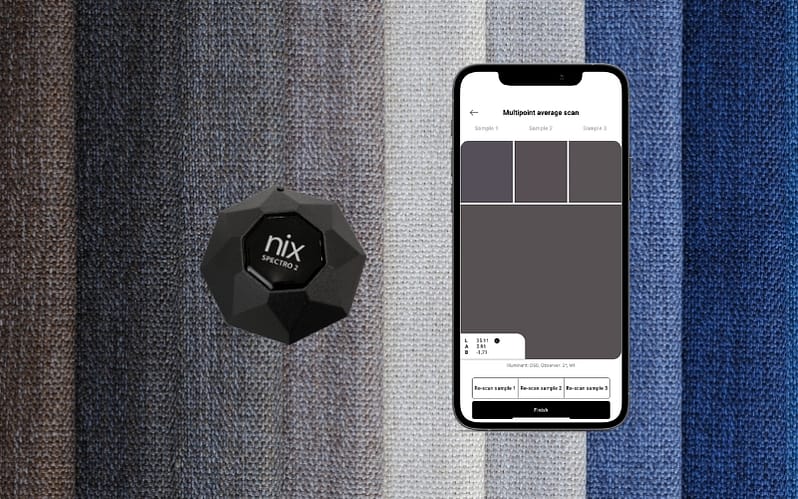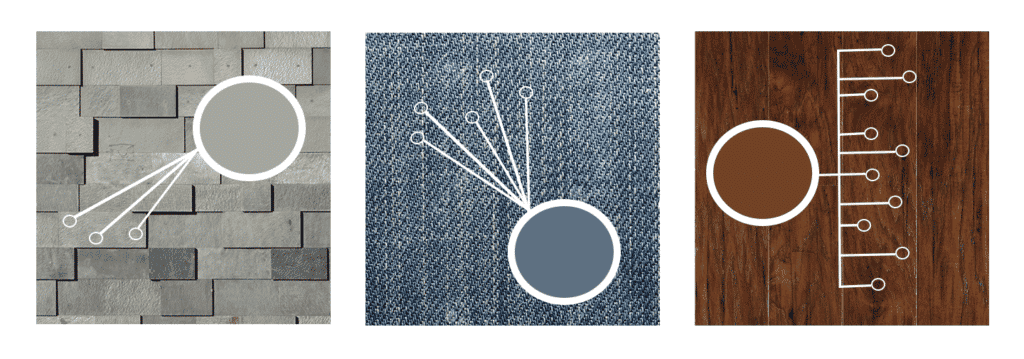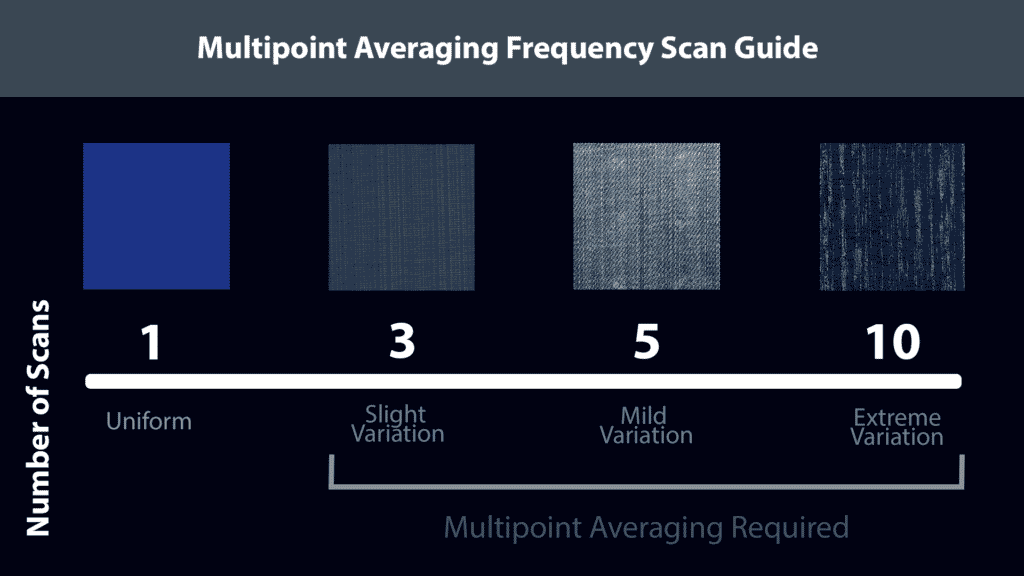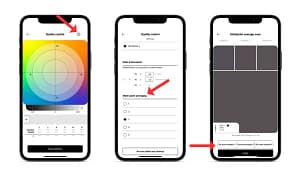Multi-point Averaging: Case Study
Multi-point Averaging with the Nix Spectro 2 Spectrophotometer and Toolkit App
Not all products are uniform in color (See case study on building blocks).
When measuring the color properties of a non-uniform surface, a spectrophotometer such as, the Nix Spectro 2 will “average out” the color located within its field of view – meaning, the colors captured within the device’s aperture are detected and averaged into a single color.

However, in some instances the color variation across the surface of a product can be irregular, making it necessary to take the average of multiple measurements during a scan. This method is called multi-point averaging.
When should I use multi-point averaging?
If your sample is non-homogenous, irregular, textured, or patterned, you should consider using the multi-point averaging function in the Nix Toolkit App. Some examples may include:
- Fabric
- Wood
- Concrete
- Foods
- Translucent liquids with suspended particles
Consider a furniture factory producing sofas. It takes an exhaustive list of materials to manufacture a sofa including wood framing, cotton batting, metal springs, and a durable fabric. Fabric is one of the most significant aspects of a good sofa, as it is often what gives a great first impression of quality, comfort, and value. The color of fabric is particularly important when consumers are considering a sofa purchase, since a sofa is often the focal point of a beautifully designed room.
A challenge for furniture makers is ensuring textiles are uniform and consistent in color. This is often difficult since these textiles are usually sourced from third party suppliers who are delivering separate orders spread out over months or years. The risk for furniture makers is receiving a batch of fabric that is not exactly what they were expecting and/or doesn’t match their existing stock. Ultimately resulting in wasted time and money fighting with suppliers to replace the inventory; throwing away mis-colored fabric; or even mistakenly shipping mis-colored sofas to retailers.
Currently, many furniture makers use swatches to ensure consistent fabric color upon delivery – but these swatches are prone to fading, leaving a lot of room for subjectivity.
A spectrophotometer such as the Nix Spectro 2 takes the guesswork out of this quality control process, by providing a precise, objective way to measure fabric color. The furniture maker, their suppliers, and even furniture retailers can use a Spectro 2 device to ensure color quality at all stages of the fabric lifespan. Using CIELAB values – rather than a subjective measurement – provides a universal way to communicate with suppliers around the world, meaning nothing is left up to interpretation or debate.
How does multi-point averaging work?
- In the case of sofa manufacturing, a fabric is chosen by an upholsterer and a master sample is agreed upon. Since this fabric has a non-uniform coloration, it is measured multiple times across its surface to determine its average color, in the form of a single CIELAB value. This value will become the reference standard.
- A threshold DeltaE (or ΔE). This DeltaE value represents the acceptable variance in color compared to the “master”. Depending on the industry, different DeltaE values would be deemed acceptable, since different industries require different tolerances.
- The number of scans required for multi-point averaging is chosen. Depending on the level of uniformity in the fabric color, it is recommended that 3 to 10 scans are performed per sample: 3 scans would be sufficient for a fabric with only slight variation throughout, while 10 scans would be needed for a fabric with more complex texture or patterning.

- The reference LAB value, threshold DeltaE, and number of scans setting are then imported and saved in the Nix Toolkit App. This reference color can then be selected in the future when upholsterers receive a shipment of this particular fabric from a supplier.
- Upholsterers or quality control technicians can now measure the precise color of fabric samples and compare to the reference standard. For each fabric sample, the Nix Toolkit App will prompt the user to take multiple measurements across its surface. Once the predetermined number of scans is complete, the app will average these readings and tell the user if the fabric is a match to the reference standard.

This crucial quality control step will both confirm that the fabric delivered from the supplier is an acceptable color and assure retailers and customers that the sofa that they ordered is exactly like the one they saw on the showroom floor. Using a Spectro 2 in a quality control workflow eliminates the subjectivity that comes with traditional swatch books, and ensures all positions in the supply chain are on the same page when it comes to color.
Take a look at more case studies with the Nix Spectro 2